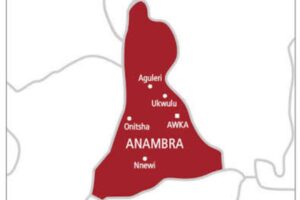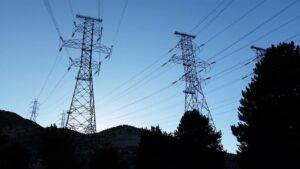Research council partners UI, FUTA researchers on local plywood
To promote sustainable development and utilisation of bamboo resources for plywood production in Nigeria, the Raw Material Research and Development Council (RMRDC) has collaborated with experts at the University of Ibadan (UI) and the Federal University of Technology, Akure (FUTA), to carry out a survey on bamboo resources of Nigeria.
The study indicated that bamboo is growing in 23 states of the federation, and only one company is producing wall and floor tiles made of bamboo in Nigeria.
As a result, investment opportunities exist in ply bamboo production and plywood production. Director-General of the council, Prof. H.D. Ibrahim, said a number of private investors had shown interest in the establishment of bamboo plantations in the country, and that the council was working with them to make it a reality.
“The council, in collaboration with organisations such as SHESTCO, is working on development of glue for plywood production.
“The council is preparing to carry out a technical audit of the mills in collaboration with the Bureau for Public Enterprises. This will indicate the present state of the equipment and the need and extent of refurbishment required prior to privatisation or investment promotion of the ply mills,” he said.
Major factors limiting the expansion of plywood industry in the country are inadequate investment in the establishment of new mills, old age of existing equipment, lack of spare parts and dependence on imported glue.
Current production is hampered by the high cost of production, resulting primarily from expensive imported resins, the council said.
Other critical challenges include inadequate availability of raw materials, such as shortage of economic wood species like Khaya ivorensis, Khaya grandifoliola, Mansonia altissima, Terminalia superba, Entandropragma cylindrical and Triplochiton scleroxylum in in the national forests.
Most of the large industries in the sector suffer from inadequate supply of electricity from the national grid.
“Also, lack of adequate water supply and good road networks affects efficient performance of the mills. In addition, over 90 per cent of the technology used in the industry are small-scale and requires upgrading.
“I wish to say that lack of guaranteed supply of the right type of wood will continue to affect investment in heavy equipment and machinery in the sector,” Prof. Ibrahim said.
Closing the gap
A major way plywood production can be increased in Nigeria is to promote availability of prime wood species through establishment of plantations. The natural forests in Nigeria have been highly decimated, researchers said. To depend on the natural forests to supply wood raw materials for the mills will be a wishful thinking.
“Likewise, we must find a way of incorporating bamboo into the mainstream of raw materials for plywood production in Nigeria. Bamboo is the principal raw material for plywood production in China.
“The Raw Materials Research and Development Council has made efforts to solve some of these problems. Since 1992, the council has initiated a plantation establishment programme through which improved planting materials are made available to private sector operatives that have about five hectares or more of land for plantation establishment,” the council boss said.
This programme is gradually increasing availability of wood resource locally. However, the programme requires active participation of state governments to enable it increase forested areas and areas under plantation in Nigeria.
The council is working towards sustainable production of plywood in the Country in order to facilitate and propel post COVID-19 industrial and economic development agenda of Nigeria.
This is important as the country has bamboo in adequate quantities. In view of this, investment in ply bamboo production is being vigorously promoted by RMRDC.
According to FAO, the volume of bamboo growing in Nigeria is about 460,000m3. This shows the great potential of bamboo in Nigeria. Apart from saving foreign exchange, this initiative will also promote development of Small and Medium Enterprises, poverty alleviation and job creation.
The plan of the Federal Government on the plywood sector was to ensure adequate production of plywood in Nigeria to save foreign exchange and to export plywood for foreign exchange earnings.
To achieve this, the government, in the 1960’s, established nine integrated plywood factories with a total production capacity of about 126,000m3. All the mills have veneer slicing operations integrated within the mills. The major problem is that since early 1990’s, nearly all the nine government established plywood mills have shut down.
Efforts to resuscitate some of them have not yielded tangible results. For instance, Epe Plywood, which was incorporated in July 1965, is now a shadow of itself. Effort to resuscitate the plant has proved abortive.
In 1973, Nigerian shareholders bought the company, and in 1976, the interest of the Western State government was taken over by Oodua Investment Company Limited. Today, the company and many of its kind are no longer producing and the heavy machines installed at different sections of the factory are rusting away on account of decades of disuse.
According to FAOSTAT 2020, plywood production grows from 68,000m3 in 1980 to 89,000m3 in 1985. Since then, plywood production gradually declined to 70,000m3 in 1986 and 65,000m3 in 1994.
Since 1997 till date, plywood production in Nigeria has been hovering around 56,000m3 yearly. This is a very dismal situation when one considers that plywood consumption in Nigeria is increasing yearly in view of its multi-various application in several industries.
As a result, Nigeria has been depending mostly on importation of plywood to satisfy about 965,000m3 required in the country, most especially, in the building, construction and furniture industry.
It is, however, interesting to note that one or two new ply mills have recently been established. For instance, Lim Timber & Plywood Industry established by the Akwa Ibom State government was commissioned in 2019. This will fill some of the yawning gap in the demand and supply of plywood in Nigeria.
Source: The Guardian













Post Comment